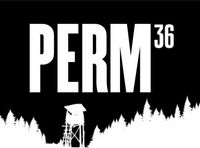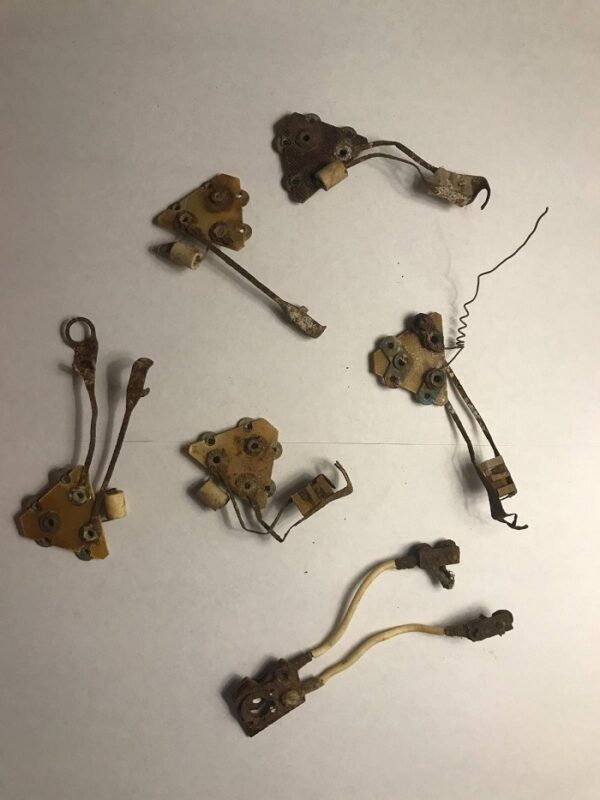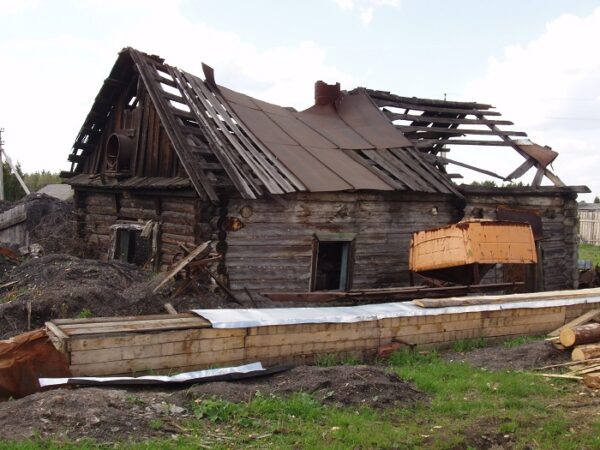As the requirements for maximum isolation at the Perm political camps did not allow prisoners to spend any time outside the camp territories, they had to work exclusively inside the camp perimeters. In the first months there were considerable problems in both camps in organizing work for the prisoners, but soon a solution was found when the camps received a contract for production work from industrial companies.
At the Perm-35 camp, the former sewing factory of the colony for underage offenders was re-equipped for sewing canvas bags to hold tools and spare parts for power saws manufactured at the Dzerzhinsky factory in Perm, and knitting netted bags for holding vegetables. In Perm-36, the workshops were equipped for manufacturing electronic components for irons manufactured by the Lysvensky turbine-generator factor. The majority of prisoners were employed at these workshops.
The manufacture of components for irons consisted of several operations for producing thermal electric heaters, contact panels and assembly of all components of the electrical circuit, which included the following steps: winding heating coils, placing the spirals and sand in copper tubes; packing the contents into tubes on the vibration bench; shaping the thermal electric heaters on the press; cutting contact panels out of the laminate, placing copper contacts in them; cutting screw threads in contacts; cutting metal components for the lightbulb; winding the resistance wire for the lightbulb; assembling all elements of the contact panel; final assembly of all components in a single chain, which was then delivered to the factory. In their memoirs, former prisoners wrote about how torturous this routine work was.
The production norms were exactly the same as they were at the factory itself, but prisoners rarely fulfilled them completely. Sometimes this was for physiological reasons – for example, not everyone could cut a screw of 3 millimeters in diameter or screw components and contacts with 3- millimeter bolts to panels, without special equipment and in a poorly lit room. But mainly it was because the work went against their principles. “We didn’t resist the Soviet regime to do this.” They usually only produced enough to avoid being punished “for non-fulfillment of the norm” by being placed in the punishment cell.
Besides manufacturing iron parts, several other metalworking and lathing works were carried out on commissions from companies, there was heavy labor at the sawmill and at the camp boiler room, work on repairing camp buildings, plowing the boundary strip and repairing camp fences. The last two tasks were primarily carried out by prisoners sentenced on charges of collaborationism and espionage, as political prisoners faithfully observed the old maxim: “a prisoner does not build his own prison”. Rather than doing this, they were prepared to go on hunger strikes, be put in the punishment cell and even face death.
In ordinary camp settlements there was always a great deal of work outside the camp zones, traditionally done by prisoners: repairs, new construction, auxiliary work etc. As political prisoners were not permitted outside the perimeter, every political camp had a so-called “small zone” for this purpose with ordinary criminals, some of whom were brought in specially. But the political prisoners never came into contact with them.









